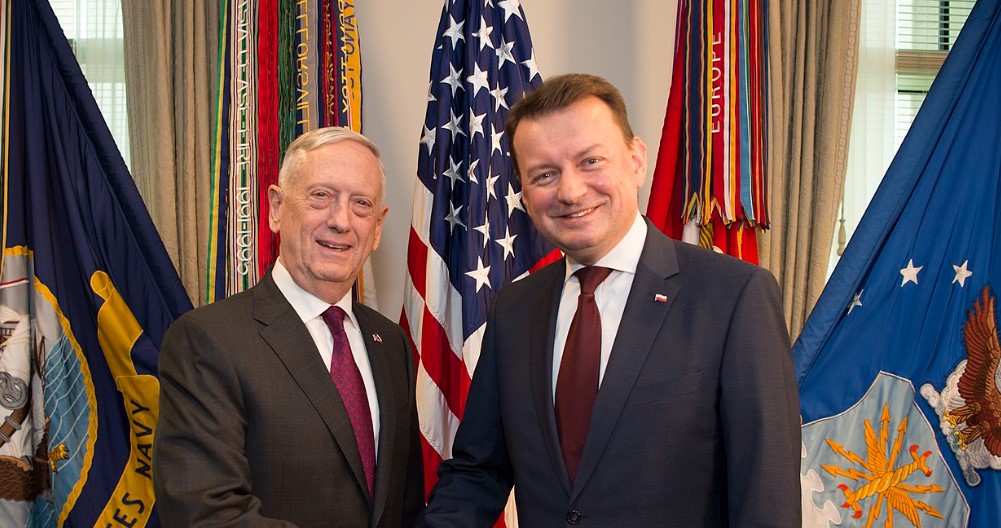 Defense Secretary James Mattis meets with Polish Defense Minister Mariusz Blaszczak at the Pentagon in Washington, D.C., April 27, 2018. Wikipedia
Defense Secretary James Mattis meets with Polish Defense Minister Mariusz Blaszczak at the Pentagon in Washington, D.C., April 27, 2018. Wikipedia
Warsaw announces massive rearmament
Poland, a NATO big-spender already, wants to become the strongest military power in Europe. Massing in lowland plains east of Warsaw, the country is eyeing its traditional place for major battles with Russia.
Published: August 4, 2022, 9:00 am
In the slipstream of the Ukraine war further tectonic changes are announced in Central Europe. Poland in particular has ambitions for greater geopolitical weight. The medium-term plans are now to be backed up by a massive rearmament project with plans to double the army’s size.
In October 2021, even before the start of the conflict in Ukraine, ruling Law and Justice (PiS) party’s leader, Jaroslaw Kaczynski declared his intention: “The security conditions have deteriorated so much that Poland, as a frontline state, has no choice but to radically re-arm itself and become one of the best European armies, in order to sustain itself alone under Russian attack, for a longer period, until NATO comes to help Poland.”
The PiS-led cabinet has prided itself on being among NATO’s top spenders (2,2 percent of GDP in 2022), which represents 12 percent of Poland’s budget. It is clearly banking on its “borrowing power” despite rising debt levels which have mushroomed during PiS’s time in office,
Polish leaders continue to maintain that security “has no price and the country must spend whatever is needed”.
Polish Defense Minister Błaszczak let the cat out of the bag in an interview with Polish broadcaster Radio 1 on Thursday. Accordingly, the Polish army should soon be able to boast the “strongest land forces in Europe”. To this end, Warsaw is now entering into a strategic partnership with South Korea.
“We aim to replace our entire tank fleet and have the strongest NATO ground forces in Europe, and we will achieve that,” Błaszczak said. “The cooperation with Korea is strategic in nature. The Polish armed forces will be equipped with the first [South Korean] K2 tanks later this year,” he added. The first 180 K2 Black Panther tanks are said to be produced in Korea, but the subsequent tranche of 800 tanks will then be produced in Poland from 2026 or earlier. Błaszczak did not rule out that a new production facility could be set up in Poland specifically for this purpose, but gave no further details.
The minister may be hedging his bets in announcing a “substantial technological transfer” since the K2 costs over $8,5 million per unit, making it one of the most expensive main battle tanks in service, of any nation.
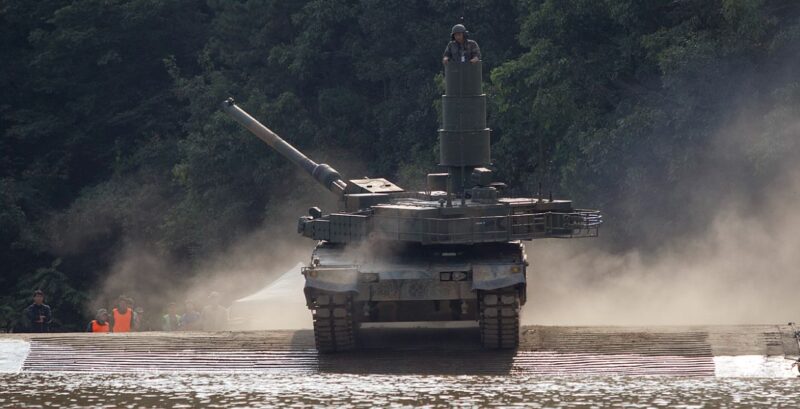
The Black Panther, K2 tank about to cross a water pool submerged with snorkel. Republic of Korea Armed Forces. Wikipedia. Polish Chief of General Staff, General Rajmund Andrzejczak, was absent when Defense Minister Blaszczak and PM Kaczynski launched their ‘grand vision’ for the armed forces in October 2021 and he has never offered a word of support since. Andrzejczak’s predecessor, General (ret.) Mieczysław Gocul, put it more bluntly in an interview: “Poland cannot afford a 300 000 army of mediocre quality, poor training and technological backwardness.”
Another procurement package concerns South Korean K2 howitzers, which are intended to supplement the Polish artillery. Initially, 48 howitzers are to be procured, some of which are to be delivered to Poland in 2022. From 2024 another 600 pieces are to be delivered, from 2026 the guns are also to be produced in Poland.
Poland will also procure 48 US FA-50 light attack aircraft. In addition, the first of the American Abrams tanks are to be delivered within the next two years. Minister Błaszczak also announced that in the near future six F-22 Raptor fighter jets will arrive in Poland to be used for Polish Air Force patrol flights on NATO’s eastern flank.
“The capabilities of the Polish defense industry have been reduced over the years,” the minister told Radio 1. Today it has a large number of orders. “We need time for this, and the Korean partnership gives us the opportunity to speed up this process.” The recently signed agreement will make it possible “to replace old post-Soviet equipment with modern equipment”.
It is an open secret among observers that Poland is pursuing ambitious plans in east-central Europe. For example, under the national-conservative PiS government, Warsaw has been striving for some time to revitalize the old Intermarium project from the interwar period and to implement it as part of the transatlantic agenda.
In addition, Poland is reportedly preparing to intervene militarily in the west of the country in the wake of the Ukraine conflict, thereby re-attaching its own former eastern territories. All of this presupposes a massive expansion of military capacities.
According to the Defence Ministry, this ambition carries a price tag of at least 115 billion euros although no details have not been made public yet. The increased spending does not require parliamentary approval nor a referendum, even for the largest procurement items. The signature of Defence Minister Mariusz Blaszczak, one of Kaczynski’s righthand men, will suffice.
Since becoming defence minister in 2018, Blaszczak has been making Poland almost totally dependent on US materiel: Patriot air and missile defence systems, F-35 stealth fighters, HIMARS rocket launchers, Black Hawk helicopters (made in Poland by Lockheed Martin) and used MRAP vehicles from Afghanistan with contracts running into billions of dollars.
An Abrams tank procurement has been the most substantial spending so far at a cost of 5 billion euros. And according to reports, no deals with the US stipulate offset arrangements that would benefit local producers.
But how will the army recruit a planned 300 000-strong fighting force in a country facing a sharp demographic downturn? Despite intensive recruitment efforts and hiking military wages above the average, the government has only managed to raise the numbers of the professional army by 13 percent to a paltry 32 000. Chief of General Staff, General Rajmund Andrzejczak, commented in November: “There simply may not be that many [Polish] warriors.”
All rights reserved. You have permission to quote freely from the articles provided that the source (www.freewestmedia.com) is given. Photos may not be used without our consent.
Consider donating to support our work
Help us to produce more articles like this. FreeWestMedia is depending on donations from our readers to keep going. With your help, we expose the mainstream fake news agenda.
Keep your language polite. Readers from many different countries visit and contribute to Free West Media and we must therefore obey the rules in, for example, Germany. Illegal content will be deleted.
If you have been approved to post comments without preview from FWM, you are responsible for violations of any law. This means that FWM may be forced to cooperate with authorities in a possible crime investigation.
If your comments are subject to preview by FWM, please be patient. We continually review comments but depending on the time of day it can take up to several hours before your comment is reviewed.
We reserve the right to delete comments that are offensive, contain slander or foul language, or are irrelevant to the discussion.
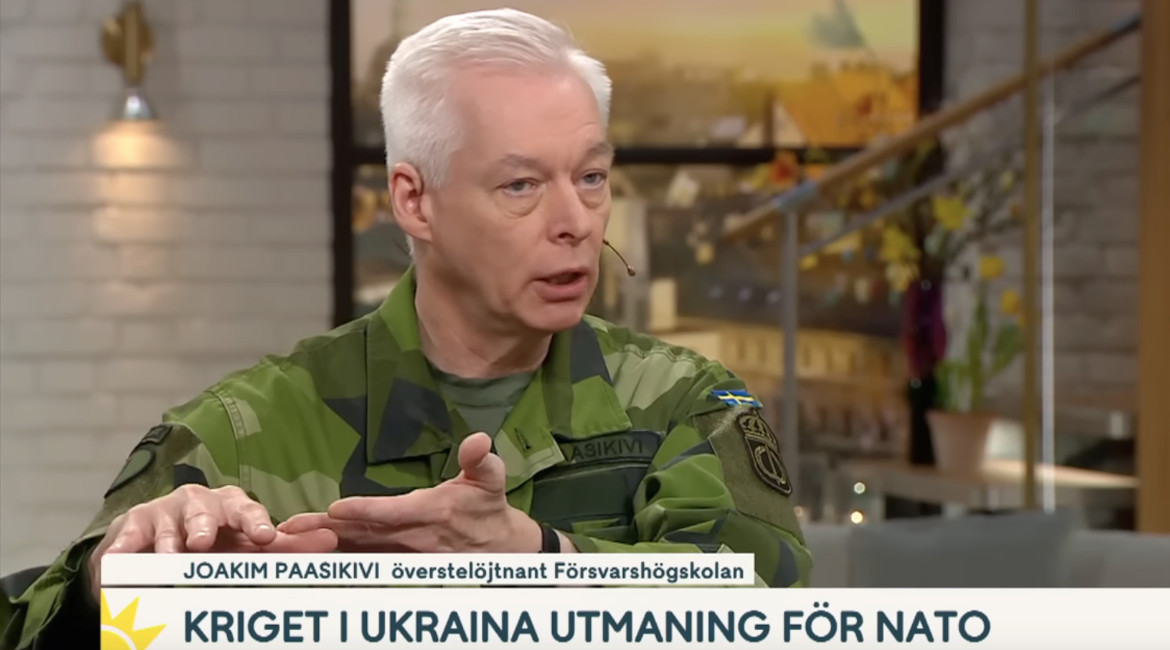
Swedish military wants to remilitarize the Åland Islands
The demilitarized autonomy has previously been known as 'the islands of peace.
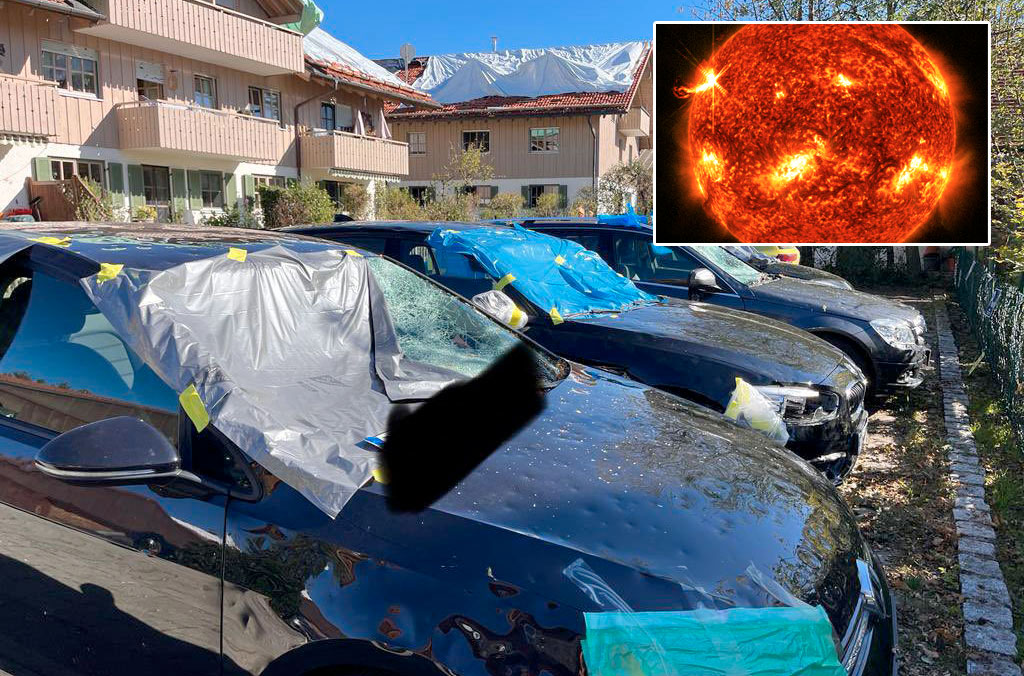
NOAA Predicts Zero Sunspots for Almost the Whole 2030s
CLIMATEThe United States' government scientific organization, the National Oceanic and Atmospheric Administration (NOAA), predicts zero sunspots from 2031 to 2040. This is an extreme situation that has not occurred in as long as humanity has been counting sunspots, and it leads us into uncharted territory in terms of our solar system. However, this prediction aligns with the warnings of the world-renowned solar researcher Valentina Zharkova for many years, who indicated in 2019 various signs of this catastrophic phenomenon, including the extreme hailstorms we have seen in Europe and the world this summer. The forecast and various observations this year give cause for very significant concern. In this unique analysis, Free West Media explains why.
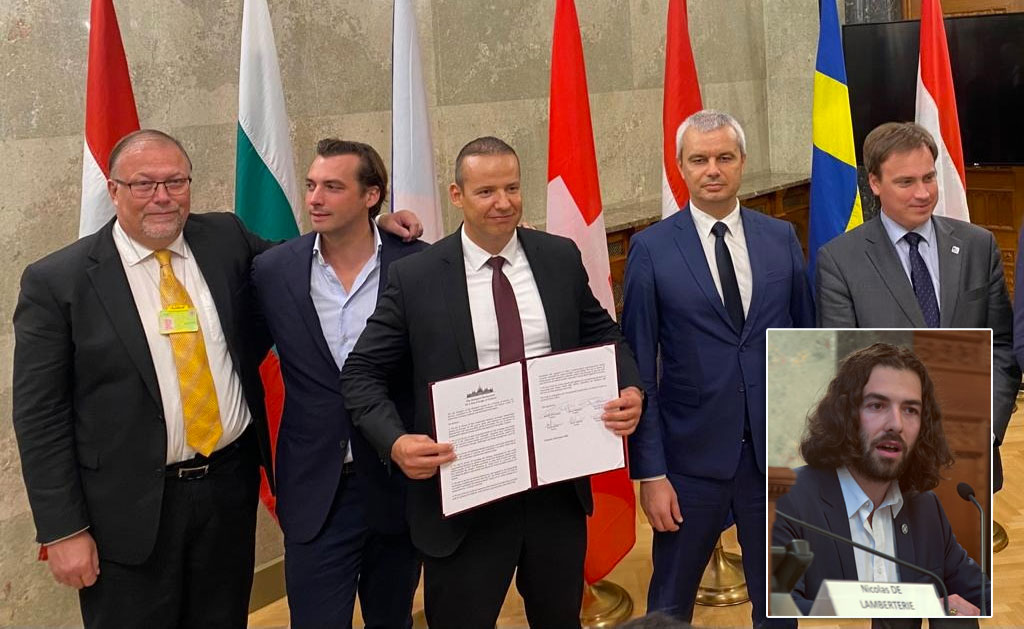
European Nationalist Parties Forge Cooperation Ahead of EU Elections
EUROPEAN ELECTIONSOn Saturday, August 26, representatives of six European nationalist parties gathered in Budapest. The meeting was initiated by the Hungarian party Mi Hazánk and took place in the national parliament. Representatives of the parties signed a joint declaration that not only reaffirms the parties' friendship but also their unity on a range of complex political issues. A surprisingly clear and radical manifesto was established. The hope is that this cooperation will lead to success in the EU elections and eventually result in the formation of a group in the European Parliament. For Swedish nationalism, this meeting marks a success as Sweden, for the first time, has a party represented in a leading nationalist cooperation in Europe. Free West Media was present at this historic event.

Turkey Believes Sweden Hasn’t Done Enough
Sweden will have to wait a bit longer for NATO membership, according to Turkey's Justice Minister Jilmaz Tunc. First, Sweden must extradite the "terrorists" Turkey wants and stop the desecration of the Quran.
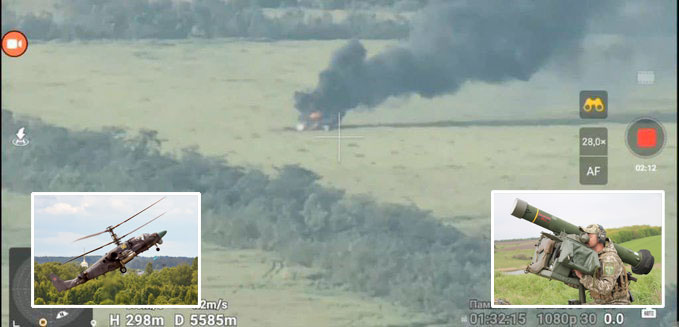
Swedish Weapon Takes Down Russia’s Best Attack Helicopter
The Russian attack helicopter Ka-52 is considered one of the world's best and has struck fear in Ukraine, where it has hunted down tanks and other armored vehicles, often beyond the range of many light anti-aircraft systems. However, it has met its match in the Swedish air defense missile system RBS 70, which has quickly led to significant losses for the Russian helicopter forces.
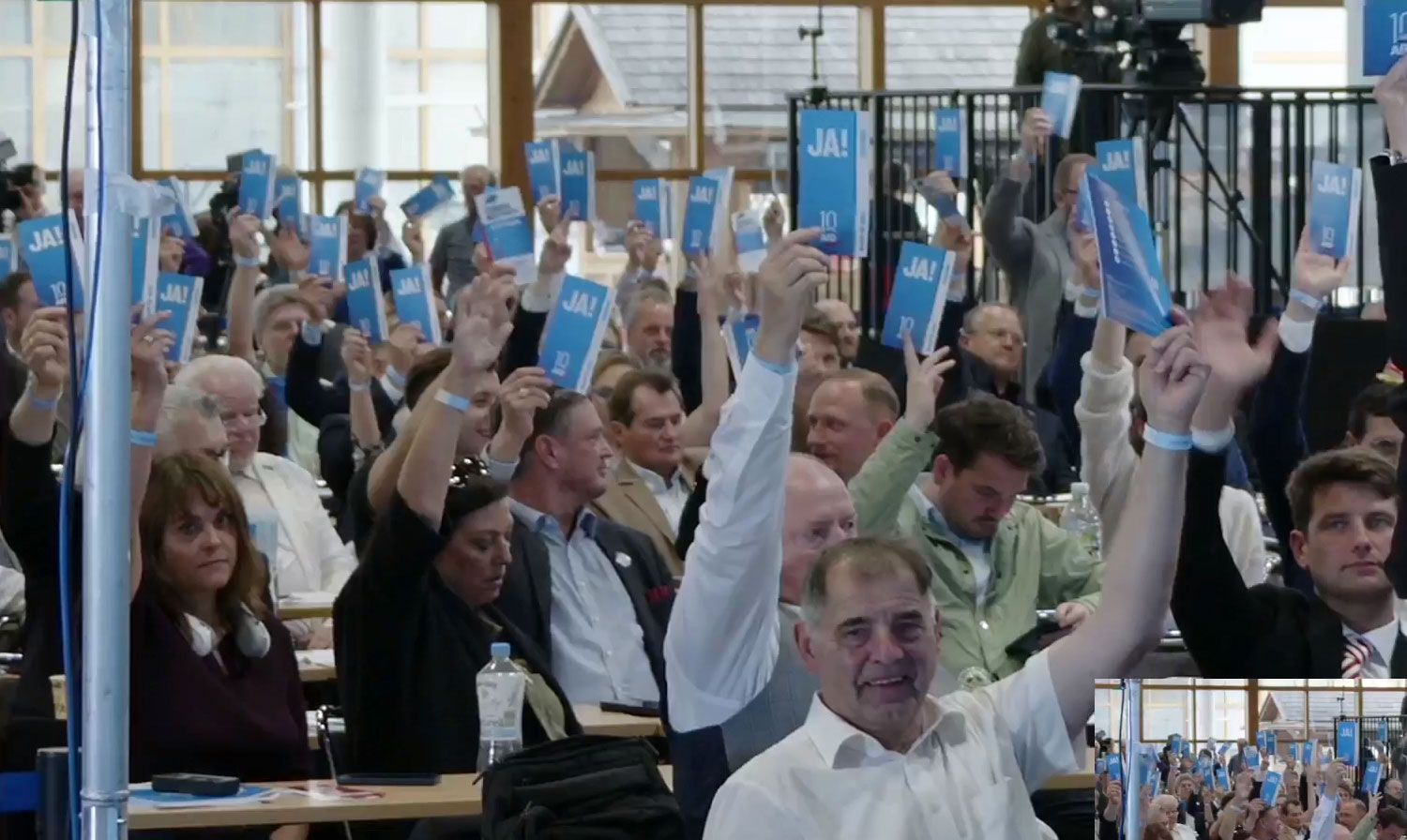
Strong Confidence in German AfD
Alternative for Germany (AfD) held a party conference on July 29-30 to select candidates for the upcoming EU election next year. EU Parliament member Maximilian Krah, belonging to the party's more radical, ethnonationalist faction, was appointed as the top candidate. The party's two spokespersons delivered powerful speeches criticizing the EU's failed migration policy and trade sanctions that isolate Europe and Germany from the rest of the world. They argued that it's time for the EU to return a significant portion of its power to national parliaments. However, they have dropped the demand for Germany to exit the EU.
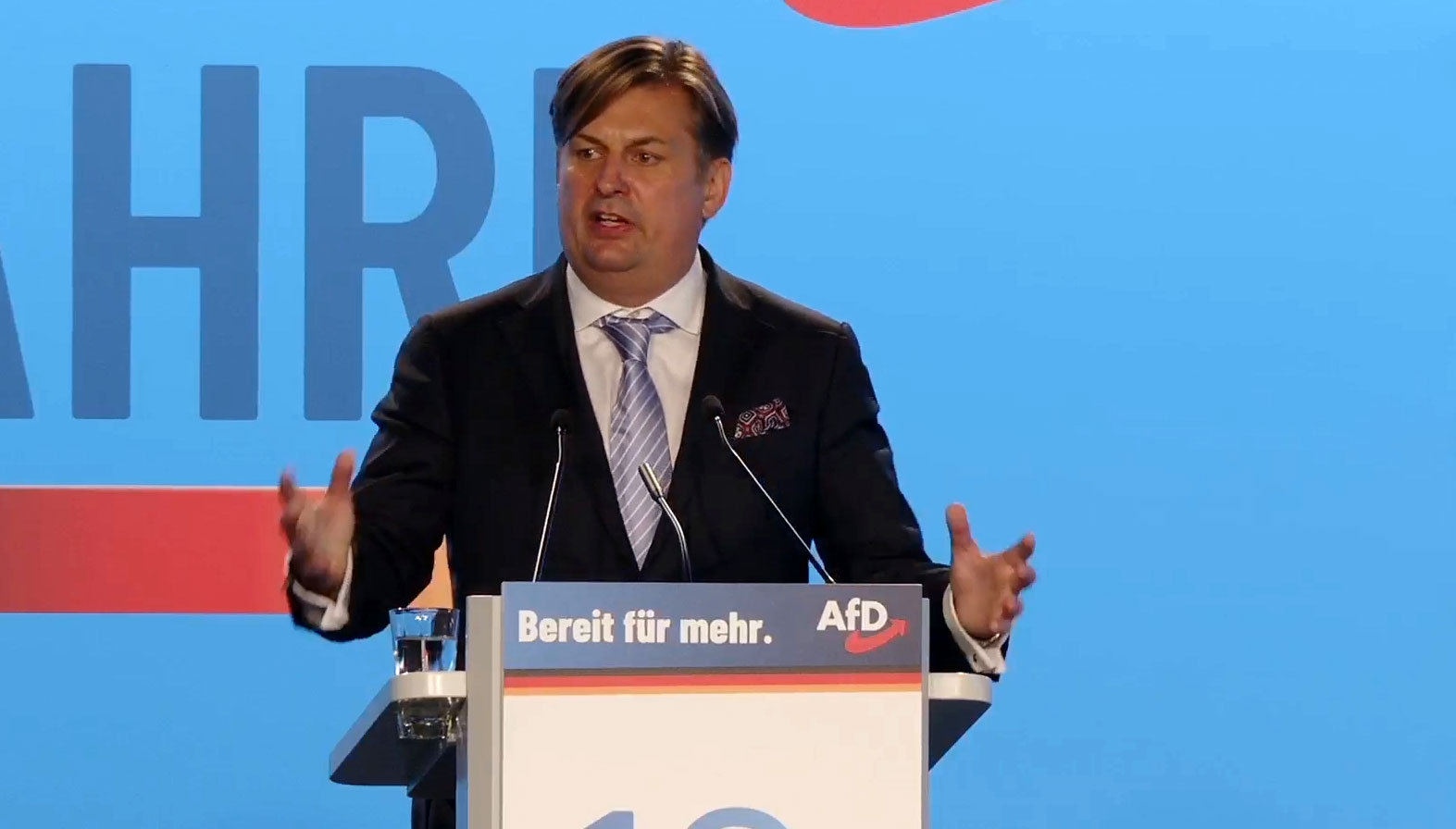
The Establishment Wants to Ban Germany’s Second Largest Party – for the Sake of Democracy
The rising popularity of AfD has raised strong concerns within the establishment. Despite lies and demonization in the media and isolation from the overall political establishment, the party continues to grow. Certain representatives of the party are accused of becoming increasingly "extreme," and in an unusual move, the influential weekly newspaper Der Spiegel demanded that AfD be "banned."

Dutch FvD break through the media blockade
What is happening in the Netherlands? It is often difficult to follow events in other countries, especially when distorted by system media. We give Forum for Democracy (FvD) the opportunity to speak out on the political situation in the Netherlands and the staunch resistance they face in trying to save the country.
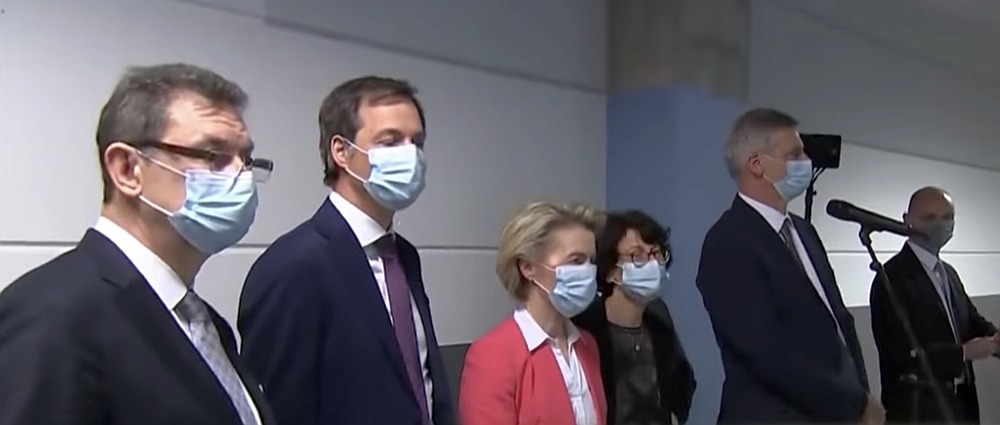
The Ursula von der Leyen Affair
After a criminal complaint in Belgium against the President of the European Commission, the so-called SMS-case, now takes a new turn. The judge responsible for the investigation will likely gain access to the secret messages exchanged between Ursula von der Leyen and Albert Bourla, CEO of Pfizer, at least if they haven't been deleted.
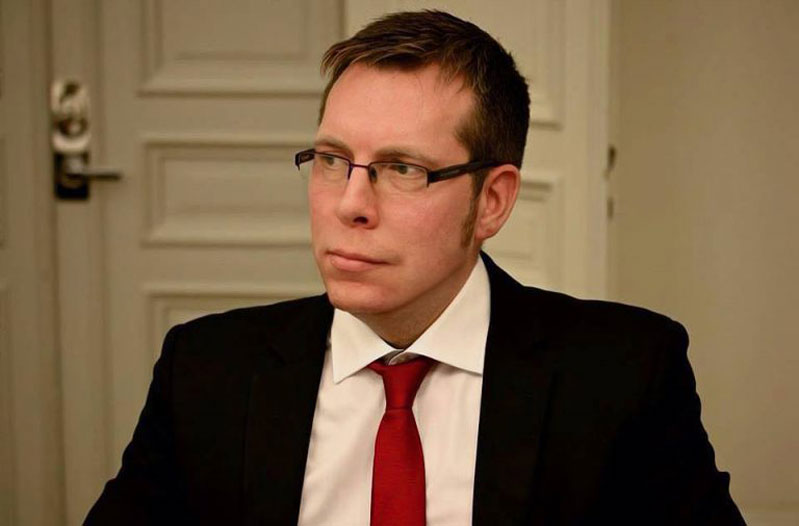
Publisher of Unique Literature Worldwide Blocked by International Distributor
Arktos has distinguished itself by publishing groundbreaking philosophers and social critics. Now, the publisher's international distributor has abruptly terminated the cooperation, and more than 400 already printed titles cannot reach their audience. There is strong evidence that the distributor has been under pressure, something that has also happened in Sweden. We have spoken with Arktos founder Daniel Friberg about the ongoing struggle for freedom of speech in a shrinking cultural corridor.
